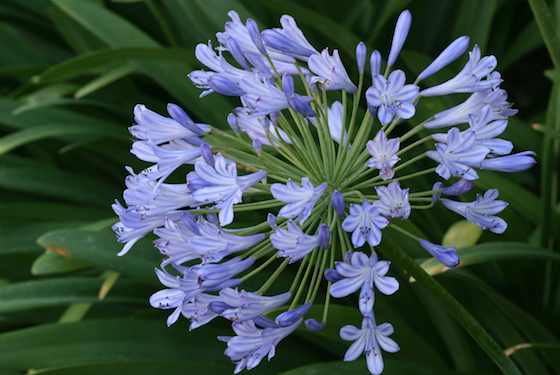By Sean Conway

Like most gardeners who have been at it for some time, I find there is usually more work to be done than time to do it.
If it is dry, there is watering to do. If it is rainy, weeds grow like lightning. If the wind blows too hard, there is cleanup. You can see how this list could easily keep going.
So I look for ways to reduce my workload without sacrificing my chosen aesthetic. A case in point is the planters on my patio. A recent visitor remarked that they looked very colorful, but she noticed that they didn't feature a lot of flowers. I explained that the reason was time more than anything else.
Flowering plants, especially those grown in containers, generally require more attention than non-flowering plants. Annual plants -- those that will produce flowers within months after being sown -- will bloom prolifically all summer in an attempt to produce seed and thus ensure their future.
The rub is that, once many annual plants produce seed, they often stop flowering and die. In order to keep them growing and blooming well, you must remove the spent flowers from the plant before seed can form -- and that takes time. Flowers not removed often drop or die on the plant, making an unsightly mess, and that I have enough unsightly messes to deal with as it is!
Over the years I have found that choosing plants based on their colorful or interesting foliage makes for containers that are much more attractive and far less work than choosing plants that flower profusely. That doesn't mean I eschew annuals altogether. I just choose the ones I use very carefully.
I look for flowering plants that give a lot of bang for the buck but don't require all the deadheading. One of my favorites is agapanthus. These South African natives produce large umbels of beautiful funnel-shaped flowers atop tall sturdy stems. The flowers can be found in various shades of blue ranging from deep indigo to sky blue, and also pure white.
They enjoy the hot summer sun and are so tough they are often used in median strips and parking lot beds in Southern California.
Agapanthus remains in bloom for weeks at a time, and the fireworks-like buds look good long before the flowers actually open, thus extending the length of the show. I grow several different cultivars, some blooming early others late, ensuring I have pots in bloom all season.
Unlike with other annuals, I let seed form on my agapanthus. After the flowers are gone, seedpods hang from the plant's umbels like dozens of emerald earrings on tiny spikes and extend the interest until the end of the season.
In my zone 6 garden, I bring the pots in just before the first frost and put them in a cold, dark basement where they sit dormant until the following spring.
Agapanthus blooms best when pot-bound, as long as the plants are provided with ample amounts of moisture and adequate fertilizer during the growing season.
To enjoy gardening, you must embrace the continual process of change. But if you find it difficult to stay on top of the change in your garden, you'll be pleased to discover that there are lower-maintenance options out there.
Available at Amazon.com:
Cut Your Energy Bills Now: 150 Smart Ways to Save Money & Make Your Home More Comfortable & Green
It's Easy Being Green: A Handbook for Earth-Friendly Living
Sean Conway's Cultivating Life: 125 Projects for Backyard Living
© SEAN CONWAY. DISTRIBUTED BY Tribune Media Services
AUTOS | HOBBIES | EDUCATION | FAMILY | FASHION | FOOD & RECIPES | HOME DECOR | RELATIONSHIPS | PARENTING | PETS | TRAVEL | WOMEN
Home & Garden - Agapanthus: A Beautiful Option for Busy Gardeners